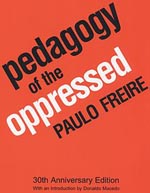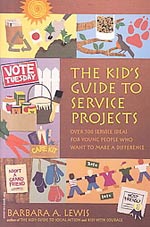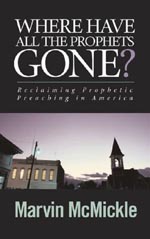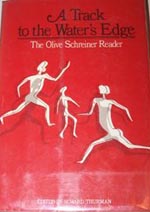|

MISSION SUNDAY
Sunday, September 25, 2011
Guest Writer for This Unit: Waltrina N. Middleton, the Minister for Youth Advocacy and Leadership Formation with the national setting of the United Church of Christ based in Cleveland, OH
The unit you are viewing, Mission Sunday, is a compact unit. This means that it does not have a supporting cultural resource unit and worship unit. Instead, to enliven the imagination of preachers and teachers, we have provided scriptural text(s) that we suggest for this moment on the calendar along with a sermonic outline, suggested links, books, articles, songs, and videos. For additional information, see Mission Sunday in the archives of the Lectionary for 2008, 2009, and 2010. 2011 is the first year that the African American Lectionary has posted compact units for moments on its liturgical calendar.
I. Description of the Liturgical Moment
Aboriginal activists, particularly Lilla Watson, are credited for the quote: “If you have come here to help me, you are wasting your time. But if you have come because your liberation is bound up with mine, then let us work together.” Watson and fellow activists understood that the gift of the mission was not solely in the vision—it was vested in the collective work and responsibility of all who came together and shared in that vision. If you have come to “proselytize,” “save,” or “rescue,” then perhaps you have missed the boat on what mission is all about.
In the aftermath following Haiti’s deadly earthquake in 2010 which claimed thousands of lives, images were shown of survivors receiving food and medical care. Pleas were made for the world to send money to “help save” and “rescue” those in need. One group of missionaries from the United States of America was arrested for allegedly trying to smuggle Haitian children into the Dominican Republic to reportedly give the children a better life. The popular formulas for mission work appeared to take linear and unimaginative approaches:
- Come in and bring what we believe is needed without consulting with the community to learn firsthand how to stand in solidarity with our brothers and sisters;
- Come in and uproot our brothers and sisters from their community and transplant them to ours, which is much better anyhow; and/or
- Write a check. Mission accomplished.
Such formulas for mission outreach are dangerous and can be detrimental to a culture’s sustainability. Financial donations are great and are needed, but most mission work involves more than cash. For example, many survivors of Haiti were living on sidewalks and on the streets, fully exposed to the elements. Tents and sunblock were needed to protect persons from the sun and the rain and even to provide safety and privacy and to affirm dignity. Flashlights were needed for the nighttime, as electricity was limited if accessible at all. Many survivors were without cars or access to public transportation. Bicycles were needed to commute for food and basic necessities. Shoes were needed for those who did not have bicycles and had to walk far distances.
Corpses were bloated and left to decompose on the streets. Resources to bury the dead properly and with respect were also needed. Media images showed survivors having to burn their dead in order to relieve themselves of the stench. Other images showed bulldozers dumping bodies into mass graves. Additionally, the psychological trauma of witnessing the death and tragedy of so many may have warranted the need for volunteers in counseling and other therapeutic services. Plus, the lack of governmental infrastructure agencies made if difficulty to get donations to the people who needed them most. Financial negotiators and diplomats were needed.
The people of Haiti needed massive mission presence on the streets just as much as they needed massive monetary donations that would eventually be filtered to the people.
Mission Sunday lifts opportunities to be in authentic fellowship with God and God’s people, sharing in God’s calling to use all means to proclaim the good news and support those who are troubled. Mission Sunday is an opportunity to remove one’s shoes and enter into a space with humility, sharing in a divine mission and common lot.
The Book of Proverbs teaches us that the absence of divine mission can result in the demise of the people (29:18). We are left to resolve that there is a critical need for divine vision and prophetic witness that amplifies the voices of those who are marginalized, alienated, and perhaps ostracized by society because of Bell Curve1 constructs that place class-value on human beings.
The Message translation of Proverbs 29:18 states, “If people can’t see what God is doing, they stumble all over themselves . . .” But what becomes of the vision without the people? How will the vision—the mission—be fulfilled without legs, arms, heads, hearts, and souls? Who will proclaim it and go tell it from the mountains? And for whom shall the mission be exercised? For whom shall Moses part the waters and strike the rock? For whom shall John the Baptist cry passionately, prophetically, and with conviction in the desert? And for whom shall Christ become a martyr? These aforementioned prophets and martyrs walked with the people, lived amongst them, broke bread in communion with the people, and shared in the work and mission for liberation and justice.
Dr. Martin Luther King Jr., a prophetic leader and great missionary of justice, is popularly quoted as saying humanity is caught in an “inescapable network of mutuality.” This certainly applies here in exploring the connection between the mission and the people. The tangibility of a vision rouses the pulse of the people. Likewise, the people are the pulse of the mission movement. The liberation is bound up in unity, love, and shared hopes.
Certainly Christ could fulfill God’s will independently, yet a scriptural passage declares rocks would cry out to glorify God if the followers of Christ remained quiet (Luke 19:28-40). A part of fulfilling God’s mission involves a collective work and responsibility. The “inescapable network of mutuality” that Dr. King spoke of reminds us of the role of the village. It also reminds us that we are a part of God’s divine plan. Let us not come in and do mission work. Let us go out and stand in mission together.
II. Mission Sunday: Sermonic Outline
A. Sermonic Focus Text(s): Mark 1:38-39 (New Revised Standard Version)
(v. 38) He answered, “Let us go on to the neighboring towns, so that I may proclaim the message there also; for that is what I came out to do.”
(v. 39) And He went throughout Galilee, proclaiming the message in their synagogues and casting out demons.
B. Possible Title(s)
i. Go Out and Tell the Story
ii. Yes, We Can
iii. I Got People
C. Point of Exegetical Inquiry
In any text there can be several words or phrases that require significant exegetical inquiry. One exegetical inquiry raised by this text is ochlos or the crowd of people who followed Christ during his tour of Galilee.
The Book of Mark transitions from chapter to chapter with stories about Christ’s interaction with the ochlos. Christ is healing people; casting out spirits that are unclean (1:21-28); cleansing the bodies of people who suffered from leprosy (1:40-42), paralysis (2:1-12), withered hands (3:1-6); and even restoring life (5:35-43). Needless to say the word got around quickly about this street healer, who hung out in the hood and had authority over demons. People wanted to see this street-wise prophet who dared to walk around with the oppressed and touch the untouchables.
Jesus took on the suffering of the people, and just by going out to the margins of society he was standing with the people and fighting at their side. Jesus’ actions spoke loudly and declared that people were at the heart of his mission. Thus, the crowd that followed Christ must be examined. Author and scholar Ahn Byung-Mu writes in his commentary in Voices from the Margin that some critics “seem to have missed the point that the authors of the Gospels put so much emphasis on ‘the people’ because they considered the relationship between Jesus and the people to be crucial for understanding the identity and mission of Jesus.”2 Further, Byung-Mu makes a direct link between the Asian Minjung theology and the Christological model of mission outreach. Minjung are those ochlos or people whom Byung-Mu states have been socially alienated. Byung-Mu writes, “They [the Minjung people] belong to a class of society which has been marginalized and abandoned.”3
We must consider the social location of the peopleor the ochlos, a term Byung-Mu writes was first introduced in Mark and used not less than 36 times; “This indicates a definite intention in the use of the word.”4 Mark wanted us to understand that the “people” or the “crowd” of people gave us insight on the historical, socio-political, and cultural context of Christ’s mission. Through the ochlos [the people], we understand the suffering of those Christ engaged and we also gain insight on Christ’s compassion for the people. Through the eyes of the ochlos, we can see where the people lived and how people were isolated, and we gain an understanding of the ideologies, convictions, and boundaries of the culture and community. We learn about state and religious laws and the cultural, social, and political interpretations of the people regarding these value systems.
Ochlos was used to identify people who suffered and people who were outcasts. These were people who were politically powerless and dispossessed. Ochlos, a Greek word, is translated to mean “the mass,” Byung-Mu writes; the term ochlos “refers to an ignorant crowd under a burden.”5 Thus, one may surmise that Christ’s mission was to share in the burden of the people. The book of Mark suggests the ochlos—the people Jesus served—were abandoned. Yet Christ’s mission was centered on these communities, and he shared in the people’s liberation.
Scholar Paulo Freire wrote that liberation is “not a gift, not a self-achievement, but a mutual process.”6 Jesus shared in a mutual process of mission with the ochlos—the people. Our model for mission must be the same.
III. Introduction
If there is nothing new under the sun, then I would argue that President Barack Hussein Obama borrowed a page from Jesus’ sacred book for strategic planning. President Obama’s masterful strategy in community grassroots organizing helped him win the race to become the 44th president of the United States of America. As a candidate, Barack Obama and his organizing team went door-to-door in the most unexpected desolate places, sharing a message of “change” to constituents who were not typically pursued by presidential hopefuls.
Jesus embarked upon towns that were likewise desolate with his own organizing team of twelve. Those towns were not visited by persons of high status and were isolated in their oppression. The headlines in Galilee did not lift up universal health care, economics, public education, food, public safety, and community development. When political parties did show up, they were not there to sit at the table for tea and converse about social welfare. They were likely there to raise taxes and enforce laws that further pushed the poor and suffering closer to the margins.
This is not to parallel Mr. Obama to Christ. It is to examine the nucleus of their community organizing or mission work—the people. The mass of people came far and near to pray (discern the mission), proclaim (go out and tell the stories), and practice (share in a vision).
IV. Moves/Points
Move/Point One – Pray: discern the mission.
The possibility of an African American winning the race for the coveted White House aroused anger and deep sentiments of racism in the nation. In fact, gun sales surged after Mr. Obama won the presidential election according to media reports.7 Jesus faced death threats too, because of his affirmation of marginalized people. Such derision would lead one to steal away for a “prayer closet” moment to seek God’s wisdom. The disciples found Jesus in a deserted and desolate place (1:35), praying and seeking guidance on how to fulfill God’s mission.
a. The mission begins with divine revelation;
b. Before going out, begin by looking within; and
c. Seek God’s face before seeking to serve God’s people.
Move/Point Two – Proclaim: go out and tell the stories.
Jesus tried to get those he blessed to remain silent, but to no avail. The people went out and proclaimed the good news. Even unclean spirits had to tell the story, too! Certainly Christ understood this; afterall, he told his followers, “Let us go on to the neighboring towns, so that I may proclaim the message there also; for that is what I came out to do” (Mark 1:38). Volunteers who supported Mr. Obama’s campaign were trained to begin their canvassing of communities with their personal stories and how their stories connected them to the mission for change. The people shared stories of illnesses, financial setbacks, home foreclosures, unemployment, and encounters with racism. Their testimonies and personal witness allowed them to be investors in the mission for change. Christ had a story to tell, too. He came to proclaim the message of justice, love, healing, restoration, peace, and human dignity. Christ’s mission is too great to be kept quiet.
a. Sharing in the mission is sharing our stories;
b. The people Jesus blessed broke barriers of oppression by breaking their silence; and
c. Jesus told the disciples his mission was to proclaim the message.
Move/Point Three – Practice: share in a mission.
Mr. Obama’s listening tour of America was of rock star status perhaps because he approached diverse demographics that were intergenerational and not as affluent. His team campaigned to those who were not as politically astute and who were typically underrepresented in political engagement. He put his proclamation into practice by sharing in the mission with the people: supporting union workers, same-gender loving persons, public educators, and military veterans.
But Jesus Christ is the ultimate superstar. The crowds that came to Jesus during his tour of Galilee were unprecedented (Mark 1:39). He reached the masses by going to the people in their location, healing the afflicted, and touching the untouchables. Christ shared in the people’s burdens and literally took on their suffering as his own. Christ shook up the establishment, challenged the status quo, and penetrated not only the streets but also the synagogues with prophetic proclamation and practice.
a. Tell the story then take to the streets and houses of worship;
b. Sharing in a prophetic mission is when proclamation becomes action; and
c. The people came because of proclamation. The people followed because of practice.
V. Celebration
People came from all over to witness the works of Christ, this great servant who put people first and who with compassion and dedication walked in solidarity with the suffering, the poor, the hungry, the sick, and the alienated (Mark 1:37). Jesus understood the need to be touched, to be listened to and heard, and the deep need to be loved and affirmed in one’s humanity. Christ’s mantra was “Let us go and proclaim the good news” (Mark 1:38). This is a message statement of unity, community, and oneness.
Jesus was a community organizer who stood up to high priests and Pharisees who used their positions of power to create class and caste systems. Jesus took the message of hope, love, and community on his mission from the streets to the synagogues and cast out unclean spirits, transforming not only the lives of the marginalized but also the systemic roots of oppression (Mark 1:39). Christ took his mission one step at a time all the way to Calvary, and there he hung from the cross standing in mission—in sacred solidarity with you and me!
Christ understood that mission begins with the people. It begins with us! The people opened their homes to Jesus. Christ is knocking at the doors of our hearts right now. The people welcomed him into their communities. They entrusted their loved ones to his care. He did more than just fellowship and drop into town. Christ inspired a shared mission that enlisted prayer, proclamation, and practice. This is the prototype for our mission service! We are the good news because this is our story! This is our song! Christ stands with us and we share in his mission. That’s a testimony too good to keep to ourselves.
VI. Illustration(s)
See the Sermon Illustrations section of the African American Lectionary for illustrations that you may wish to use in presenting a sermon for this moment on the liturgical calendar.
VII. Sounds, Sights, and Colors in These Passages
Some of the descriptive details in these passages include:
Mark 1:38
Sounds: The footsteps of disciples walking through the wilderness searching for Jesus; the echoes of Jesus praying, his voice guiding the disciples to where he went out seeking guidance for the mission; the sound of birds singing or a rooster crowing proclaiming a new day; the praise and shouts of disciples rejoicing in Jesus’ mission to go out and proclaim the message;
Sights: People doing mission work with Christ; the neighboring towns in the horizon through the trees facing the rising sun; and
Colors: The burnt red glow of the rising sun glistening over the morning dew; rich orange sun rays of hope shining on neighboring towns as Christ and his disciples went out to proclaim and practice.
Mark 1:39
Sounds: The hush in the crowd as people listened intently to Jesus and witnessed his power;
Sights: Paralyzed persons walking; demons cast out and rebuked; outcasts running from the margins and into towns offering testimonies; massive crowds of people climbing atop trees, overflowing the synagogues, and walking for miles to be near Jesus; and
Colors: Pale faces becoming healthy and vibrant after encountering Jesus’ touch and message.
VIII. Songs to Accompany This Sermon
A. Hymn(s)
- Here Am I. By Nolan Williams, Jr.; for use during commissioning
- Blessed Assurance. By Fanny J. Crosby
B. Well-Known Song(s)
- Said I Wasn’t Gonna Tell Nobody. By Alex Bradford

- Send Me, I’ll Go. By Canton Spirituals

- A Change Is Gonna Come. By Sam Cooke
- Make Them Hear You. By Lynn Ahrens. Music by Stephen Flaherty. From “Ragtime the Musical”; for use during commissioning
Go out and tell the story.
let it echo far and wide.
make them hear you.
make them hear you.
how that justice was our battle and how justice was denied.
make them hear you.
make them hear you.
and say to those who blame us
for the way we chose to fight
that sometimes there are battles
which are more than black or white.
and i could not put down my sword
when justice was my right.
make them hear you.
make them hear you.
my path may lead to heaven or hell
and God will say what’s best
but one thing he will never say
is that i went quietly to my rest.
go out and tell our story
to your daughters and your sons.
make them hear you.
make them hear you.
proclaim it from your pulpit.
in your classroom with your pen
teach every child to raise his voice
and then, my brothers, then
will justice be demanded
by ten million righteous men.
make them hear you.
when they hear you
I’ll be near you again.
C. Spiritual(s)
- Go in De Wilderness. By The Princely Players
- Go Tell It on the Mountain. By John W. Work, Jr.
D. Modern Song(s) (Written between 2000–2011)
- It’s a New Day. By will.i.am
- I Give Myself Away. By Sam Hinn and William McDowell; for use during commissioning

IX. Videos, Audio, and/or Interactive Media
- “Yes, We Can 2008.” By will.i.am and various artists. Speech by President Barack Hussein Obama. Online location: http://youtu.be/jjXyqcx-mYY accessed 25 March 2011
- “Stand Up for Haiti.” Adobe Youth Voices. Online location:
http://vimeo.com/15166507?ab accessed 5 March 2011
- “Heal the World.” By Michael Jackson. Online location: http://vevo.ly/hNMNDd accessed 5 March 2011
- “Waiting on the World to Change.” By John Mayer. Online location:
http://vevo.ly/hbuQu0 accessed 5 March 2011
X. Books to Assist in Preparing Sermons or Bible Studies Related to Mission Sunday

| Byung-Mu, Ahn. “Jesus and the Minjung in the Gospel of Mark.” Voices from the Margin: Interpreting the Bible in the Third World. Sugirtharajah, R.S., ed. Maryknoll, NY: Orbis Books, 2006.
Byung-Mu’s critical essay brings us back to the core of what a Christ-centered mission is all about—the people and standing in solidarity with those we serve.
|

| Freire, Paulo. Pedagogy of the Oppressed. New York, NY: Continuum International Publishing Group, 2007.
Liberation theologian and scholar, Freire raises social consciousness with a prophetic voice challenging methodologies, social codes, and systemic roots that dehumanize members of society. Freire denounces class constructs that isolates labor workers, the poor, the uneducated, and other marginalized communities. Freire insists faith and practice should not be mutually exclusive but serve as a unified theoretical practice for mission ministry.
|

| Lewis, Barbara A. The Kid’s Guide to Service Projects: Over 500 Service Ideas for Young People Who Want to Make a Difference. Minneapolis, MN: Free Spirit Publishing, 1995.
Lewis creates a timely resource for young people who want to engage mission service. The projects are diverse inclusive of working with the elderly community to lobbying Congress. The book provides basic tools that youth can use and out-of-the-box approaches to mission work. Lewis illustrates that mission work does not have to be confined to the four walls of a church.
|

| McMickle, Marvin. Where Have All the Prophets Gone? Reclaiming Prophetic Preaching in America. Cleveland, OH: Pilgrim Press, 2006.
McMickle raises the critical question “Where have all the prophets gone?” as a call to action and reflection on mission work that has evolved into opportunistic, prosperity driven models, far removed from Christological frameworks of community and social justice.
|

| Thurman, Howard, ed. A Track to the Water’s Edge: The Olive Schreiner Reader. New York, NY: Harper & Row Publishers, 1973.
Howard Thurman critically examines the social and theological perspectives of an Englishwoman born in South Africa of missionary parents. The encounters Olive Schreiner had with class systems, racism, and marginalized communities intersecting with “well-meaning” missionaries were strikingly familiar to Thurman, a black male intellectual experiencing the racial tides and divides of America. The book offers a personable exploration of Schreiner’s struggle to affirm the humanity of the Africans her family came to “save” and the complexity and humility of entering into a space to stand in solidarity with the suffering and oppressed.
|
XI. Links to Helpful Websites for Mission Sunday
XII. Notes for Select Songs
A. Hymn(s)
- Here Am I. By Nolan Williams, Jr.
Location:
African American Heritage Hymnal. Chicago, IL: GIA Publications, 2001. #466
- Blessed Assurance. By Fanny J. Crosby
Location:
The New Century Hymnal. Cleveland, OH: The Pilgrim Press, 1995. #473
B. Well-Known Song(s)
C. Spiritual(s)
- Go in De Wilderness. By The Princely Players
Location:
Go in De Wilderness. Washington, DC: Smithsonian Folkways Recordings, 1994. Track #116
Online location: http://www.folkways.si.edu/TrackDetails.aspx?itemid=29576
- Go Tell It on the Mountain. By John W. Work, Jr.
Location:
African American Heritage Hymnal. #202
D. Modern Song(s) (Written between 2000–2011)
Notes
1. Herrnstein, Richard J. and Charles Murray. The Bell Curve: Intelligence and Class
Structure in American Life. New York, NY: Free Press, 1994. This controversial publication theorizes that intellectual capacity is genetically induced and thus certain racial groups are inferior to others because of race and environmental indicators.
2. Byung-Mu, Ahn. “Jesus and the Minjung in the Gospel of Mark.” Sugirtharajah, R.S., ed. Voices from the Margin: Interpreting the Bible in the Third World. New York, NY: Orbis Books, 2006, p. 87.
3. Ibid., 100.
4. Ibid., 88.
5. Ibid., 98.
6. Freire, Paulo. Pedagogy of the Oppressed. New York, NY: The Continuum International Publishing Group, 2007.
7. Bohn, Kevin. “Gun sales Surge after Obama’s Election.” CNN Articles Online. 11 November 2008. Online location: http://articles.cnn.com/2008-11-11/justice/obama.gun.sales_1_gun-shop-brady-campaign-gun-owner?_s=PM:CRIME retrieved 29 March 2011
|